Rock - Seeing What You Are Feeling For
We teach that to know how the shape of the bars matches the shape of the horse, you need to feel under the saddle with your hand. But what are you feeling for when it comes to rock? Rock, of course, is the curve of the bar from the front to the back, and it varies a lot between horses, and trees. So what does that feel like under the saddle, and what do you want it to feel like? Here are some pictures to show you what you are feeling for.
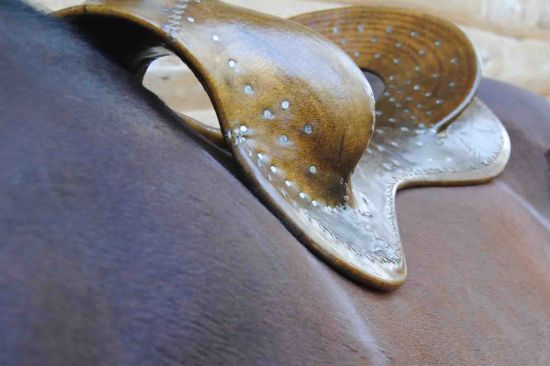
Starting at the front, make sure the saddle is in the correct position with the front of the bar right behind the shoulder blade of the horse. What you want to feel is even contact with the horse, top to bottom (angle) and right up to the front bar tip, with a smooth transition away from the horse at the front bar tip, as pictured.
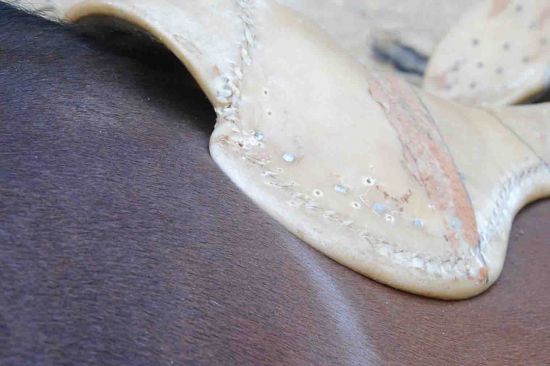
You definitely don’t want high pressure there, as with this tree. You can feel that point of high pressure compared to the rest of the bar.
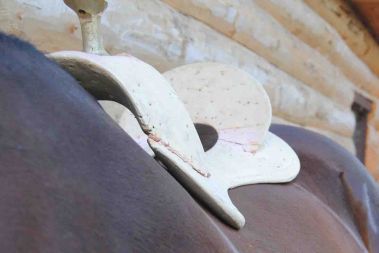 |
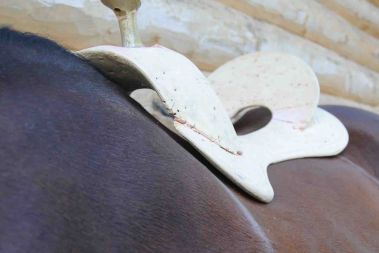 |
But you also don’t want gapping. Gapping results from the fallacy of “flare”, which is, in practice, extra rock in the front of the tree. With “flare”, there is room for your hand under the front bar tip for a ways back, so you can very easily fit your hand under the front bar tip. The idea behind this is that you have room for your horse’s shoulder to move under the front of the bar. Pressure results tell us that this just isn’t necessary.
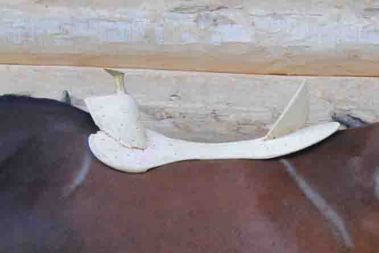 |
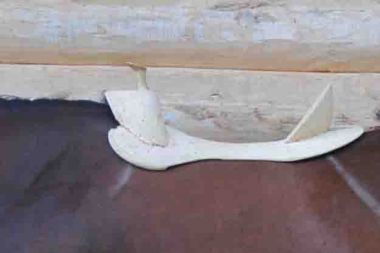 |
The detrimental and practical result of this is that the tree moves forward till it is up on the shoulder blades, just where you don’t want it. This results in pressure between the tree and the shoulder blade when the horse has his leg on the ground, and it causes damage to the horse. So you want the feel of the first picture in this series, not high pressure, as in the second picture, or excess room under the front bar tip, as in the rest so far.
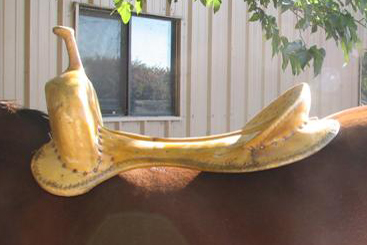
Moving back to the center of the saddle, one thing you might find is bridging – too little rock in the bar so it has contact at the front and the back but misses in the middle. This is a picture of an extreme amount of bridging (thanks Bruce Johnson!). When you run your hands under the saddle in this scenario, you really can waggle your fingers up and down a lot. I know, because I have felt this!
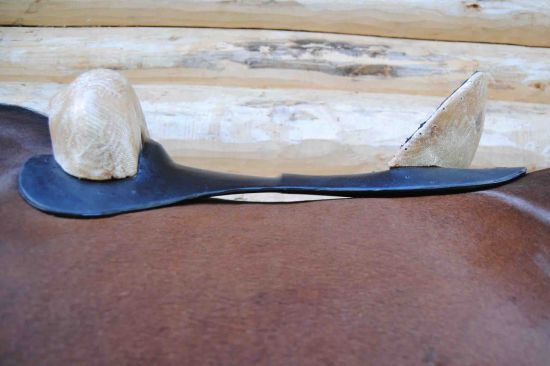
And here is less bridging, but still enough that you can easily tell that there is space between the horse and the bar. Despite what you might read on the internet, this is not a good thing, because we know, by academic experiments, that horses sag under weight, so a saddle that bridges like this without someone in it will bridge a lot more with a rider. You might also feel some saddles have is a little less pressure in the middle, but not an absolute gap. This will likely fall in the realm of useable on that horse.
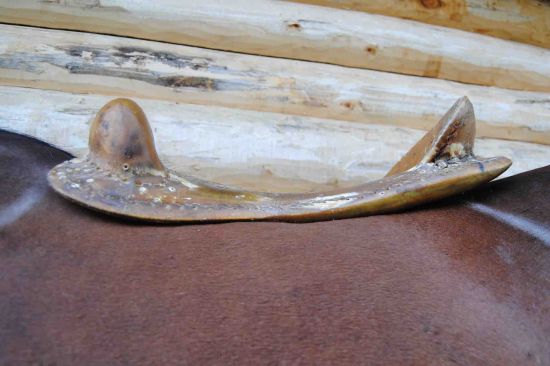
You will rarely feel high pressure under the center of a saddle, unless it has WAY too much rock for the horse, so it lifts off front and back, as this tree does.
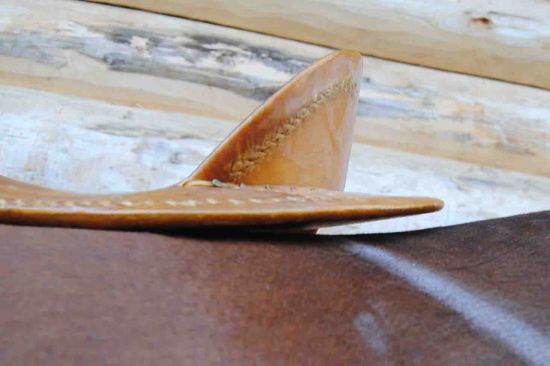
What you are more likely to find if there is too much rock in the tree is that there is contact on the first 2/3 to ¾ of the bar, and then no pressure at all, because the back of the bars lift off the horse too far forward, as in this picture. The thing to remember here is that you might find the same feel if the bar spread or bar angle is too wide, and the saddle is “falling down in the front”. So check the angle and spread first, and if they are OK and this is happening, it is a case of too much rock. (See the series Why Does My Saddle Lift Up At The Back? for more information.)
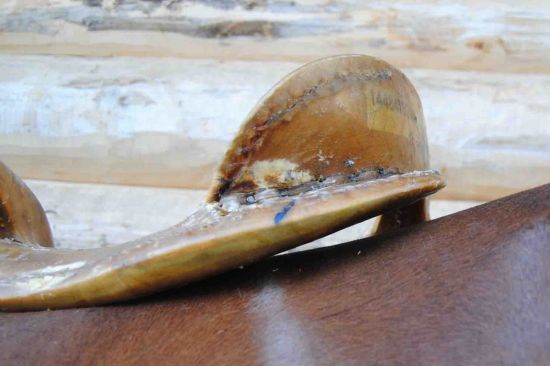
Sometimes, and getting more common, unfortunately, you read that the bars are supposed to lift off before T18 or the last rib (marked in chalk on this horse) or some other specific point, because you hear that there is never supposed to be any weight past that point. That is a fallacy, which we have written about before, more than once. All western saddle extend onto the loin and have for hundreds of years, and if it crippled horses, the design would have been discarded long ago. It is OK to have some pressure on the loin, but not too much. And since you want to have enough surface area on the horse to spread out the weight, so you don’t want it to lift off too soon.
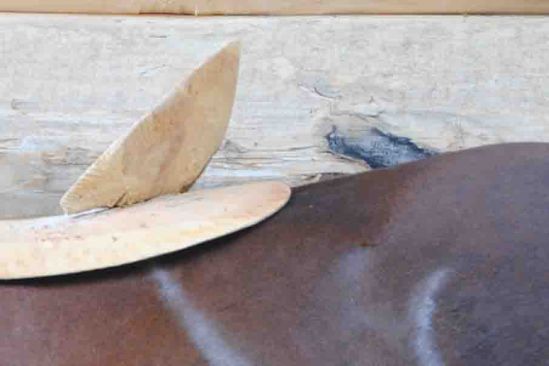
On the other hand, you don’t want high pressure on the loin, especially at the back bar tips – and you can feel for that too. (This may or may not be associated with a bridging tree, depending on the design of the bars.) Back bar tips that dig into the horse cause a lot of pain and soreness in the horse, and a lot of performance issues too as they affect the medial gluteal muscle – a major muscle the moves the hind leg. So you need to check by feel to see if you have high pressure there.
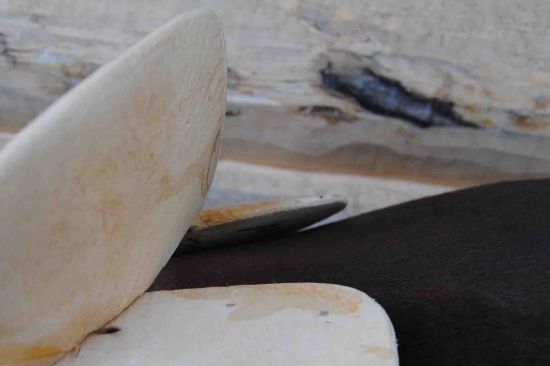
What we like to feel is that the bar lifts off the horse about 2” or so from the back bar tip. When weight is put in the saddle, it presses into the muscles of the horse. With this amount of lift at the back, you will not have a high pressure point, and you will still have maximum surface area on the horse.
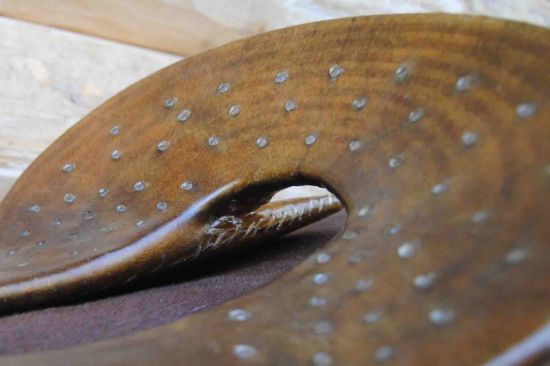
So as you feel under the saddle, you are wanting even pressure all the way down, until you get to about two inches from the back bar tip, where you want it to lift off, as with this tree. There won't be high pressure on the back bar tip this way, and you still have maximum surface area on the horse.
And that is what you are feeling for when you check for rock under a saddle!!
